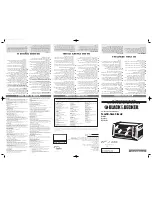
Page 25
MagnaTech
BOILERS AND VOLUME WATER HEATERS
7.2 BMGV Suggested Piping
Schematics
Figure 11 through Figure 13 show suggested
piping configurations for BMGV boilers.
These diagrams are only meant as guides. All
components or piping required by local code
must be installed.
7.3 BMGV Piping Requirements
The water piping should be supported by
suitable hangers and floor stands. Do not
support the piping with this appliance. The
hangers used should allow for expansion and
contraction of copper pipe. Rigid hangers
may transmit noise through the system
resulting from piping sliding in the hangers.
We recommend that padding be used when
Section 7 -
WATER CONNECTIONS
BMGV UNITS
7.1 BMGV Water Quality
BMGV water heaters must be installed in water
conditions of 15 gpg hardness or less, with a
pH range of 6.5 to 9.5 pH. Values outside of
this range may reduce the life expectancy of
the product. Operating the BMGV in water
with higher hardness levels will cause heat
exchanger fouling, erosion, or corrosion, leading
to premature component failure, reduced
efficiency, heat exchanger failure or system
failure. Failure of this type will not be warranted.
If the water in use exceeds the conditions
recommended, water softeners or other devices
should be installed to improve water quality.
Figure 11. DHW Piping - One Heater, One Vertical Tank
NOTES:
1. Locate BMGV DHW sensor or remote aquastat well
in lower 1/3 of tank.
2. Back flow preventer may be required - check local codes.
3. Thermal expansion tank may be required - check local codes.
4.
Caution:
Pump sizing must be based upon water hardness at job site.
5. If the tank does not have a tapping for the cold water supply, the supply may be run
to the pipe between the tank and boiler inlet.
NOTE:
This drawing shows
suggested piping configuration and
valving. Check with local codes and
ordinances for additional requirements.
Location
of pump
TPRV
Supply
Building
return
Expansion
tank
Cold
water
supply
3
2
1
















































